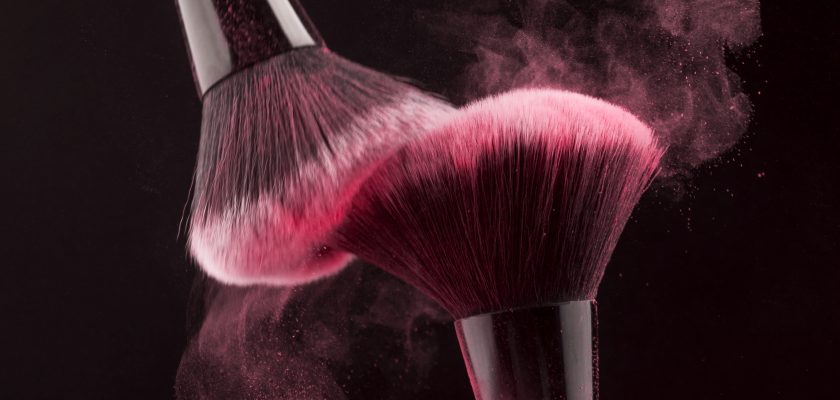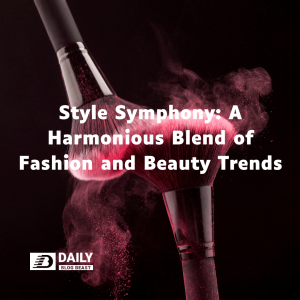Introduction:
In this captivating journey, we explore the ever-evolving tapestry of style, where every garment and makeup stroke tells a unique story. Join me as we delve into the world of trends, self-discovery, and the transformative power of embracing your kind of beauty.
Get ready to unlock the secrets of confidence, creativity, and the allure that comes from expressing your authentic self through the canvas of fashion and beauty.
This is not just about what you wear or how you adorn yourself; it’s a celebration of individuality, a dance of colors, textures, and forms that transcends the superficial to reveal the true essence of you. Welcome to a world where every thread and every shade is a brushstroke on the canvas of your identity.
The 21st century has been a whirlwind of diverse and dynamic fashion trends, reflecting the rapidly changing landscapes of culture, technology, and global influences. Here’s a glimpse into some notable trends that have shaped the sartorial scene in this century:
Fast Fashion Revolution:
The rise of fast fashion giants has transformed the industry, making trendy and affordable clothing accessible to a broader audience. However, it has also raised concerns about sustainability and ethical practices.
Athleisure Takeover:
The blending of athletic and leisurewear became a defining trend, with sporty elements seamlessly integrated into everyday fashion. Comfort met style, and sneakers became a fashion staple.
Sustainable Chic:
As environmental consciousness grew, so did the demand for sustainable and eco-friendly fashion. Ethical production practices, recycled materials, and second-hand shopping gained popularity.
Digital Influence:
Social media influencers and online platforms emerged as powerful forces shaping fashion trends. The “see now, buy now” mentality heightened consumer expectations for immediacy and accessibility.
Gender Fluidity:
The 21st century saw a significant shift towards breaking traditional gender norms in fashion. Unisex and gender-neutral clothing lines gained prominence, challenging the idea of rigid gender-based styles.
Tech-Infused Fashion:
The integration of technology into fashion became more prevalent, with smart textiles, wearable tech, and interactive fashion experiences hitting the runway.
Cultural Appropriation Awareness:
With increased cultural sensitivity, there has been a call for more respectful representation of diverse cultures in fashion. Designers are encouraged to celebrate diversity without appropriating or misrepresenting traditions.
Retro Revival:
Nostalgia played a significant role, with fashion trends drawing inspiration from past decades. Vintage styles, such as high-waisted jeans and retro sneakers, made a strong comeback.
Streetwear Dominance:
Streetwear evolved from a subculture to a mainstream fashion phenomenon. Casual, comfortable, and edgy, streetwear became synonymous with urban cool.
Customization and Personalization:
The desire for unique, one-of-a-kind pieces led to a surge in customizable fashion. From personalized sneakers to made-to-order clothing, consumers sought individuality in their style.
These trends collectively showcase the dynamism and adaptability of the fashion industry in the 21st century, reflecting a balance between tradition and innovation, comfort and style, and global influences.
The beauty industry in the 21st century has witnessed a transformative journey marked by innovation, inclusivity, and a celebration of individuality. Here are some noteworthy trends that have shaped the beauty landscape in recent years:
Inclusive Beauty:
A major shift towards inclusivity and diversity emerged, challenging traditional beauty standards. Brands began embracing a wider range of skin tones, body types, and gender identities in their marketing and product offerings.
Natural Beauty Movement:
The emphasis on natural beauty gained momentum, with a focus on skincare and embracing one’s unique features. “No-makeup” makeup looks and minimalist skincare routines became popular.
Rise of Influencer Beauty:
Social media influencers and beauty bloggers played a pivotal role in shaping beauty trends. Makeup tutorials, product reviews, and real-life transformations became influential in driving consumer choices.
Clean Beauty:
Increasing awareness about ingredients and their impact on health led to a surge in demand for clean and transparent beauty products. Consumers sought products free from harmful chemicals, cruelty-free, and environmentally friendly.
Bold and Experimental Makeup:
While natural beauty had its moment, bold and experimental makeup also thrived. Vibrant eyeshadows, unconventional lip colors, and avant-garde looks gained popularity as a form of self-expression.
Skincare as Self-Care:
The focus shifted from covering up flaws to preventing them, leading to a skincare revolution. Self-care rituals, multi-step skincare routines, and a focus on overall skin health became integral to beauty routines.
Technology in Beauty:
The beauty industry embraced technology with innovations like augmented reality for virtual try-ons, personalized skincare apps, and high-tech beauty devices for at-home treatments.
Body Positivity:
The beauty industry started challenging unrealistic beauty standards by promoting body positivity. Brands began featuring diverse body shapes and sizes in their campaigns, encouraging self-love and acceptance.
Gender-Neutral Beauty:
Breaking away from traditional gender norms, gender-neutral beauty products, and marketing became more prominent. Makeup and skincare were positioned as products for all, regardless of gender identity.
Sustainable Beauty:
With a growing environmental consciousness, sustainable beauty practices have gained traction. Refillable packaging, zero-waste initiatives, and eco-friendly formulations became priorities for both brands and consumers.
Collectively, these beauty trends reflect a shift towards authenticity, individuality, and a more holistic approach to beauty that goes beyond superficial standards. The 21st century has seen a redefinition of beauty as a diverse and inclusive concept that celebrates uniqueness in all its forms.
Conclusion:
In the 21st century, fashion and beauty have undergone transformative journeys, mirroring the shifts in culture, technology, and societal values. The runways and beauty counters have become stages for celebrating diversity, inclusivity, and the power of self-expression.
In fashion, the rise of fast fashion, the embrace of sustainable practices, and the fusion of athleisure and streetwear highlight a dynamic industry navigating between tradition and innovation. The runway is not only a showcase of trends but a reflection of societal movements and a canvas for pushing boundaries.
Simultaneously, beauty has witnessed a revolution—one that goes beyond conventional standards and welcomes a spectrum of faces, bodies, and styles. The beauty industry has become a platform for self-love, promoting skincare as self-care and championing the authenticity of natural beauty.
Both fashion and beauty have become intertwined with our digital lives, influenced by social media, influencers, and the demand for immediacy. Yet, amidst the fast-paced changes, there’s a growing appreciation for timeless elegance, sustainable practices, and the enduring power of individual style.
As we navigate this ever-evolving landscape, remember that fashion and beauty are not about conformity but about embracing the unique canvas of yourself. Whether you find beauty in bold experimentation or in the subtlety of simplicity, whether your style is a reflection of tradition or a rebellion against it, you are the artist, and these realms are your palette.
So, let fashion and beauty be your tools of self-expression, your forms of empowerment, and your mediums for telling the world. Remember that the most enduring style is the one that authentically reflects you, as trends come and go.


